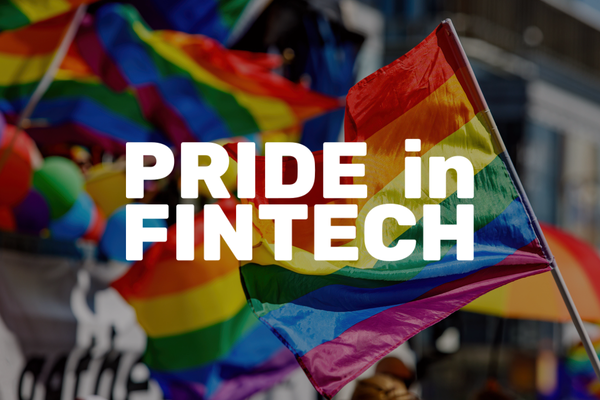Inclusivity in the workplace

There is little disagreement that organisations with a diverse workforce achieve better results and have happier employees. Often the focus is on ethnicity and gender. There is, however, much more to diversity than those two parameters. True diversity in the workforce encompasses the broad range of characteristics, experiences and perspectives that make each individual unique.
One of the most important is cultural background. This includes factors such as region or country of upbringing, religion and family or community traditions, all of which combine so that different individuals bring different attitudes and thought processes to the workplace. Socio-economic status, class if you like, is also important: people from different income backgrounds may have very different views of what is important, how to respond to others, and how to achieve change.
Then there is educational background. Employers are often fixated on qualifications and pay less heed to (generally far more relevant) work experience. Accepting that different people may have different, but still valuable, transferable skills is a critical part of finding the best person for a particular role.
And then there are other factors such as age, cognitive and physical diversity and personality which all add extra dimensions to this complex picture.
Why is diversity important?
Incorporating these dimensions of diversity into the workplace is not only important for ethical reasons. Of course, inclusivity and equity are fundamental principles of business morality, as well as being legal requirements. But diversity but also enriches an organisation’s ability to thrive in an increasingly complex and interconnected world.
Diversity facilitates greater innovation and creativity. Bringing together individuals with unique perspectives and experiences can help people question assumptions and spark new ways of thinking. This can also lead to better decision-making because diverse teams have access to a wider range of viewpoints and different ways of analysing problems. Diversity substantially reduces the potential for groupthink.
Another key benefit of diversity is market insight. When employees from various backgrounds are involved in product development, marketing and customer service, they can relate more effectively to a wide range of customers, leading to improved customer satisfaction and loyalty. In an increasingly globalised world this is an important source of competitive advantage.
And in a time of scarce skills, diversity in the workforce is an engine for attracting and retaining talent. Inclusive workplaces are attractive to a broader pool of candidates, and potential employees are more inclined to join and stay with organisations where they feel they can be themselves and contribute without discrimination.
Bias in recruitment and workforce management
Unfortunately, equity and inclusivity are often scarce commodities. There are many reasons for this. Bias towards or against particular genders or ethnicities is well established. But there are many other reasons for inequality of opportunity, including a tendency to be attracted to people who are similar, something that can exacerbate class, gender or ethnic bias.
This bias can be evident in the way educational qualifications are evaluated, with recruiters favouring candidates from prestigious universities or those with certain degrees, inadvertently excluding equally capable individuals who made different choices about their education, or who had different opportunities. Some organisations have turned to AI technology as a way of circumventing these biases, but sadly, many early instances of AI have proved to be even more biased than human recruiters, largely due to a failure to “train” these tools on a sufficiently diverse data set.
Perhaps more surprising to some people is the existence of attractiveness bias. The “beauty premium”, where there is a preference for good-looking or tall candidates, is a less discussed but significant factor in recruitment inequality.
Often these biases are unconscious. Recruiters may be unaware that they are favouring people because they have a similar background which makes them seem trustworthy, less risky. Attractiveness bias in particular is often deeply unconscious, meaning hiring managers may not even be aware of (or perhaps may refuse to accept) the influence it has on their decisions.
Unfortunately stereotyping, where preconceived notions about certain groups can lead to their exclusion from job opportunities, means that, because of the way they look or talk, candidates can be unfairly labelled as less qualified, less intelligent or less suitable for certain roles.
Avoiding bias and promoting equality
So what can organisations do to avoid unfair bias and achieve a more diverse workforce? Often, training is given as the answer. Mandatory diversity training for hiring staff can raise awareness of biases and may sometimes promote inclusive behaviours, although it is not always successful especially where bias is deep seated in the unconscious.
Indeed, according to the UK government’s Behavioural Insights Team:
“Studies are yet to rigorously show that [unconscious bias training] and diversity training change biased behaviours in the workplace in any lasting way, or improve outcomes for women and black and ethnic minority groups in terms of representation in leadership positions or reducing pay gaps.”
But there are other, more effective, ways that organisations work towards a more diverse workforce.
Starting from the top
As with so many things, a focus on diversity needs to start from the top. Unless leaders buy into the idea of diversity it is likely to fail. They should set clear goals, backed by clear diversity policies and non-discrimination clauses in all relevant documents.
Measuring success is also important and leaders must ensure that periodic diversity audits are conducted to assess the state of diversity and inclusion within the organisation, with the audits used to identify areas for improvement.
Inclusive hiring practices
Organisations also need to structure their recruitment processes so that they promote fairness. Methods can include:
- Blind recruitment: personally identifiable information is removed from CVs during initial screening to mitigate biases; this should be done by someone other than a member of the recruitment team or automatically
- Standardised interviews: the same interview questions and evaluation criteria are used for all candidates to help ensure they are assessed consistently
- Diverse interview panels: where a panel of interviewers is used, these are made up of people from various backgrounds to provide different perspectives
- Making allowance: some candidates may need a slightly different approach if they are to be treated fairly; for example allowing people to submit video CVs as an alternative to written CVs can help neurodiverse candidates or those with dysgraphia or dyslexia
- Diverse candidate sourcing: a variety of recruitment channels can be used to attract candidates from different demographics – care should be taken that any particular under-represented group is not favoured over other under-represented groups
- Being encouraging: some candidates, such as some women or people from certain ethnic groups, may have a tendency to self-select themselves out of a role, thinking they don’t have 100 per cent of the requirements – by using appropriate language they can be encouraged to submit their application anyway
- Using artificial intelligence: AI tools can help eliminate bias in job descriptions, CV screening and interview processes, although considerable care must be taken to ensure that the tools are not embedding further bias
None of these techniques will be sufficient on their own and none can guarantee diversity. A regular analysis of recruitment data will therefore also be necessary to identify and act on areas where bias may be present. Alongside this, proactive measures such as feedback mechanisms, the use of inclusive language and setting up support groups for minority groups within the workforce, will encourage a culture of inclusivity.
By proactively focusing on achieving diversity in recruitment, organisations can promote a more inclusive workforce. This not only supports fairness, but also enhances innovation, decision-making, employee engagement and the overall success of the organisation.

Jeremy Swinfen-Green
Related Articles
Most Viewed
Winston House, 3rd Floor, Units 306-309, 2-4 Dollis Park, London, N3 1HF
23-29 Hendon Lane, London, N3 1RT
020 8349 4363
© 2024, Lyonsdown Limited. Business Reporter® is a registered trademark of Lyonsdown Ltd. VAT registration number: 830519543





